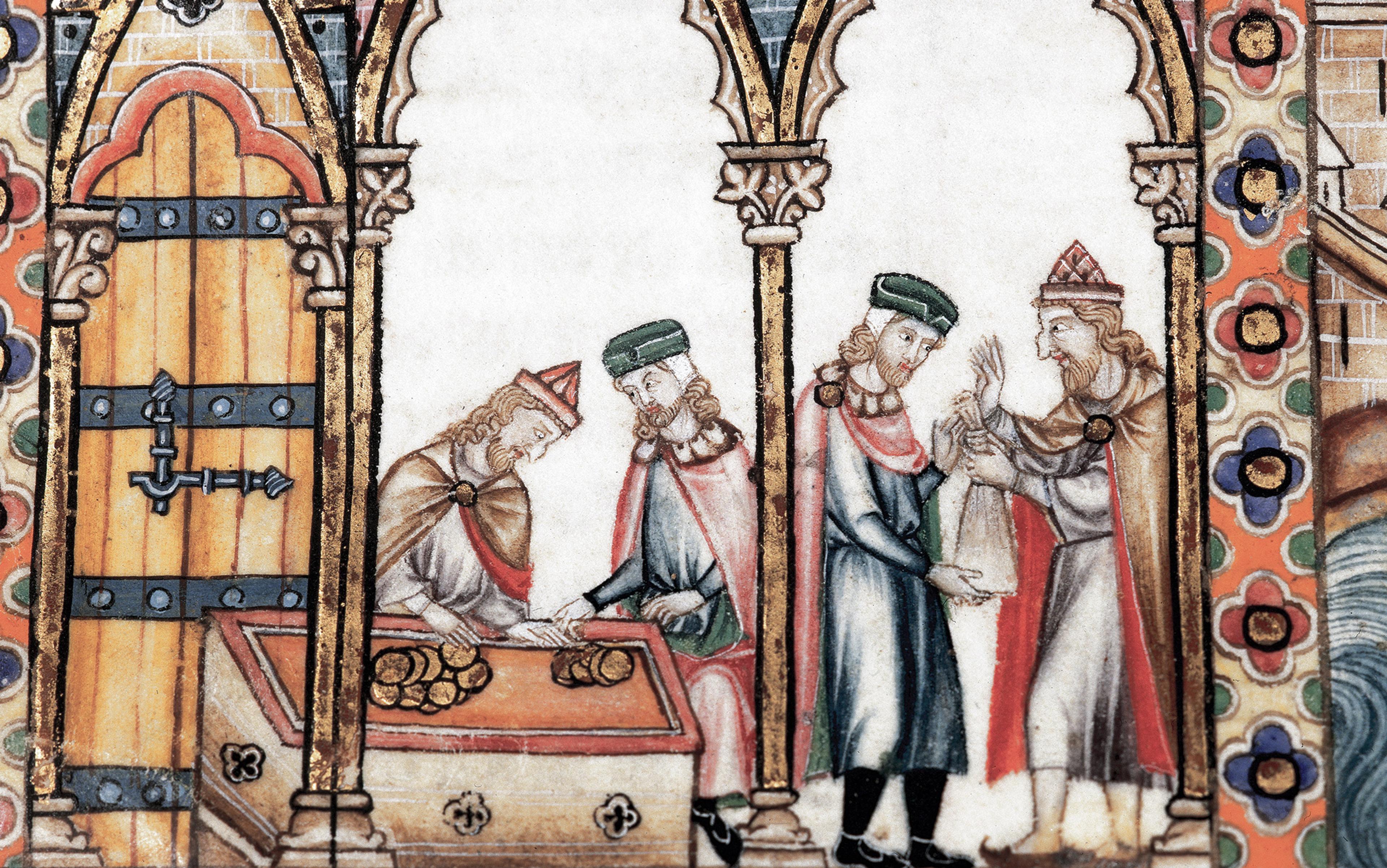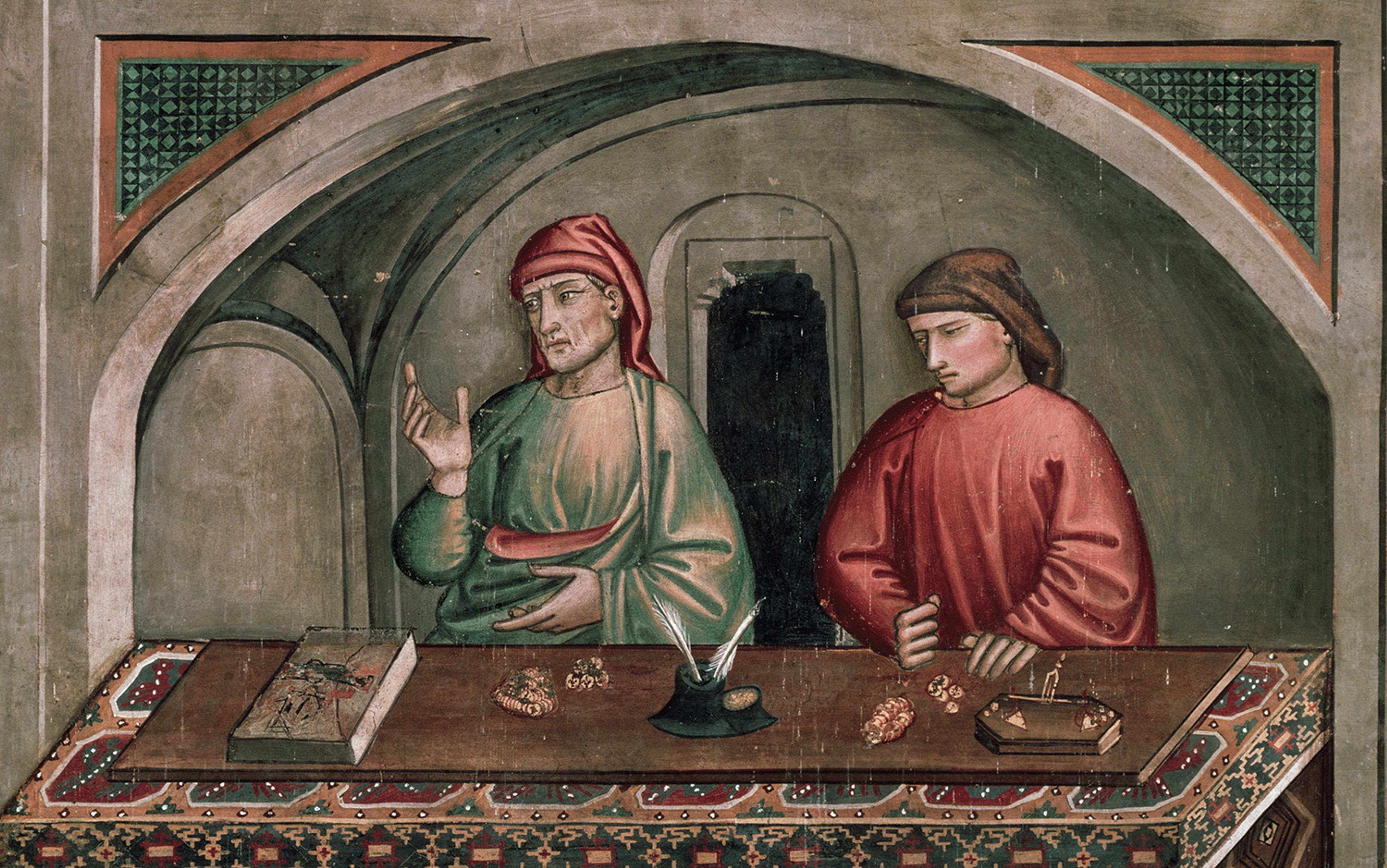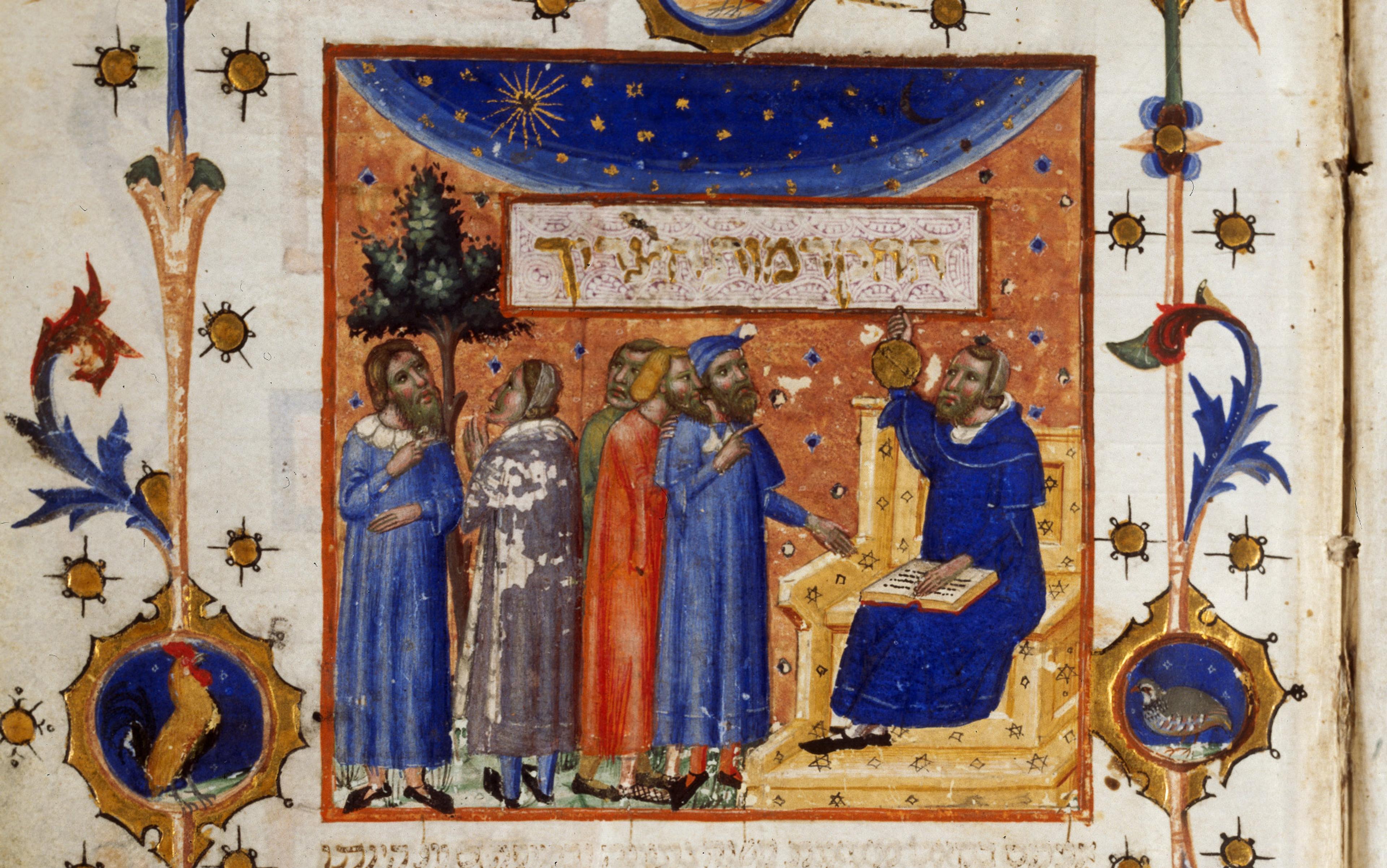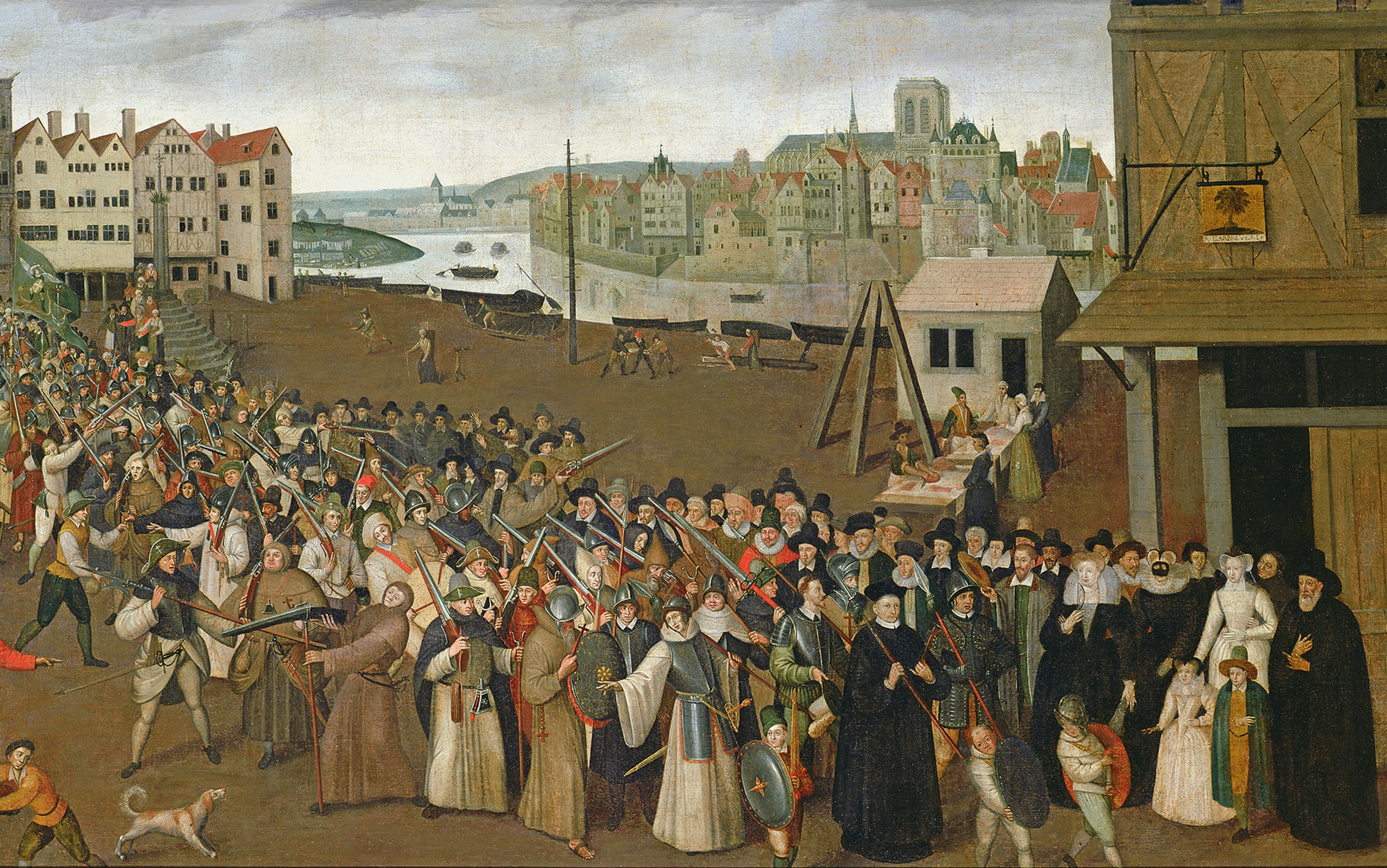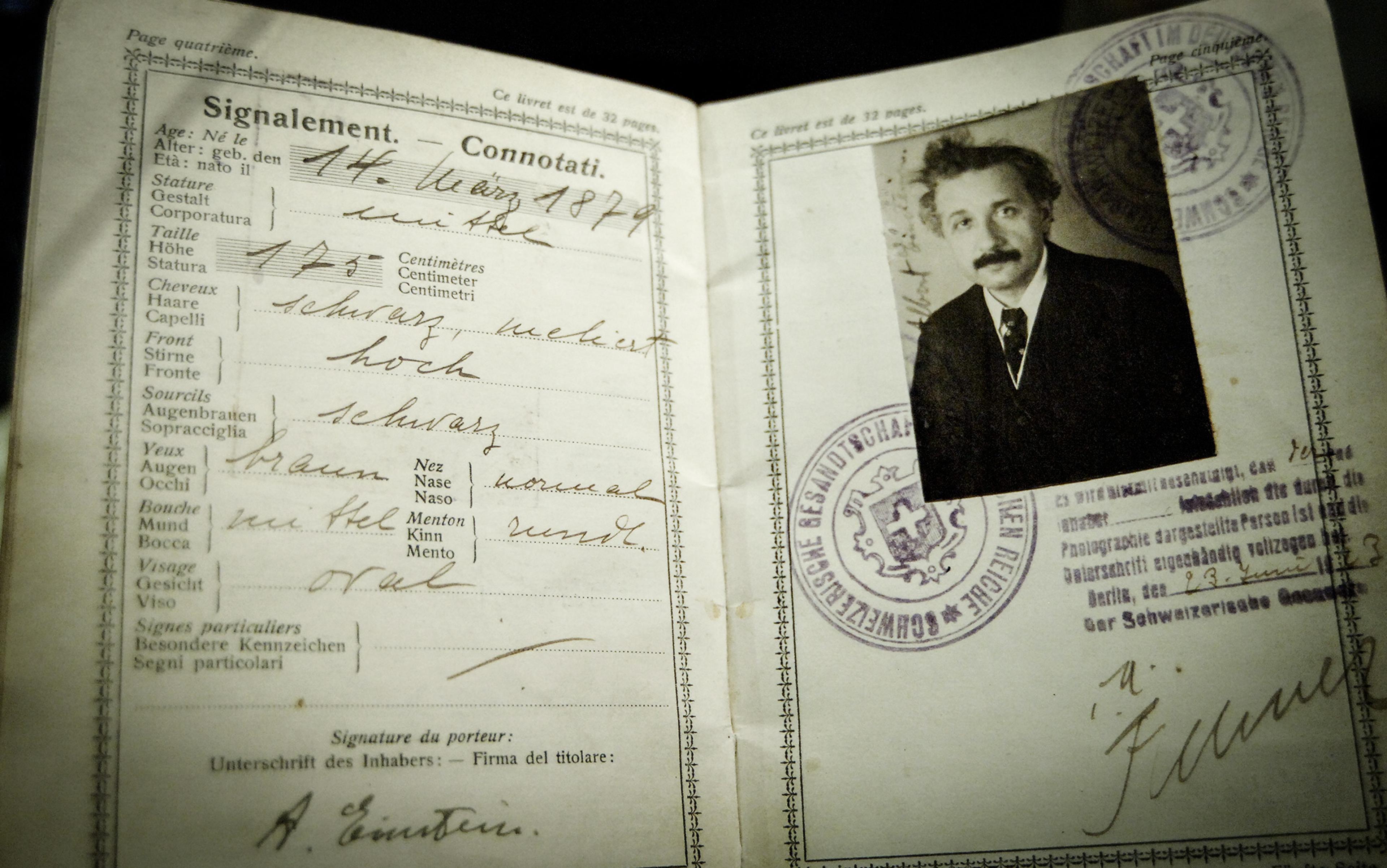The question of what links medieval to modern antisemitism is one of the most controversial topics in modern history. Among the most thought-provoking arguments about the matter is a lecture that the renowned Jewish historian Yosef Hayim Yerushalmi delivered in 1982: ‘Assimilation and Racial Anti-Semitism: The Iberian and the German Model’. Yerushalmi’s argument is not entirely convincing, but rests on a compelling analogy. For him, baptism was to medieval Europe what legal equality is to modern liberal societies. In theory, baptism and citizenship eliminated all discrimination against Jews. In reality, they gave rise to new fears that, even as their distinctiveness disappeared, Jews would remain fundamentally different. This imagined difference, no longer marked as apostasy to Christianity or disloyalty to the state, suffuses what Theodor Adorno in 1951 called ‘the rumour about Jews’: a conspiratorial mentality that sees Jewish people as invisible and yet ubiquitous, as capable of pulling the strings of power from behind the scenes.
Yerushalmi used the analogy between baptism and citizenship to contest the opposition between a medieval, religious anti-Judaism and a modern, secular and racialised antisemitism. But there are more and different lessons to be drawn from his insight. One of these lessons concerns the penchant of learned and popular authors, from the Middle Ages to the 21st century, for linking capitalism to Jews. This durable and protean connection has nothing to do with any historical role played by Jews in the development of European capitalism. It has everything to do with the social transformation and uncertainty that accompanied the advent of capitalism, especially finance capitalism. More than 500 years before the industrial revolution, finance capitalism, represented by paper instruments, enabled new kinds of commerce over long distances and generated new wealth. But this wealth was increasingly disconnected from the production and exchange of material goods. It overturned traditional economic models and threatened the established social order. The more capitalism became intangible, the more the rumour about Jews spread.
Finance capitalism dates back to the commercial revolution of the Middle Ages (1100-1348) and matured during the economic expansion of the 16th century, when Europe began to exert its domination over the rest of the world. What does the baptism of Jews have to do with finance capitalism? To answer this question, we must begin by noting that, according to Christian theology, baptism – the rite of passage necessary to enter the Christian covenant – is a sacrament dispensed individually that renders all those who receive it equal to each other and in the eyes of God. It is a radically levelling act. The specific beliefs and practices adopted by various Christian denominations are less important than the core idea articulated by Paul, in 1 Corinthians 12:13: ‘For we were all baptised by one Spirit so as to form one body – whether Jews or Gentiles, slave or free – and we were all given the one Spirit to drink.’
Following Paul’s precept, there is no difference between someone who is born into, baptised and raised in a Christian family, and someone who converts or descends from a family of converts. In practice, Christians have not always observed the spirit of Paul’s assertion. Medieval Iberia, Yerushalmi noted, was the site of the first major crisis in the Christian theology of baptism. After a wave of deadly attacks in 1391-92, thousands of Jews, hoping to escape further violence, asked to be baptised. In 1492, the Spanish crown gave those who had continued to live as Jews only two choices: convert or leave. In the wake of these mass conversions, as Yerushalmi put it: ‘The traditional mistrust of the Jew as outsider … gave way to an even more alarming fear of the Converso as insider.’
The fear that ‘Conversos’ were crypto-Jews passing as Christians inspired secular and ecclesiastical law. Around 1450, new municipal statutes in Spain, the so-called statutes of the purity of blood, forbade anyone who had been baptised recently (or whose ancestors were found to have been Jewish) from holding public offices and entering religious orders on the assumption that they were still Jewish at heart. A new, all-powerful inquisition, created in 1478, prosecuted these recent converts – not just baptised Jews (Conversos) but, after 1502, former Muslims (Moriscos) as well. Inquisitors launched large-scale genealogical enquiries aimed to determine who was a scion of ‘new Christian’ lineages.
Yerushalmi regards the 15th-century statutes of the purity of blood and the activities of the Spanish inquisition as the roots of modern racism and a prelude to the genocide perpetrated by the Nazis. Scholars continue to debate whether these 15th-century anti-Jewish sentiments and legislation qualify as modern racism. The issue is important, but so is a different, related and equally prolonged historical problem: the parallels that medieval and modern European authors frequently drew between the threat posed by baptised Jews and the fears engendered by the growth of the financial economy. A negative portrait of both Jews and capitalism nourished most of these parallels.
To appreciate how this analogy between baptised Jews and finance capitalism could take hold of people’s imaginations, we need to see the connection between three apparently independent historical phenomena. First, medieval Iberia was not the only time and place where people grew apprehensive about Jews’ supposed invisibility. When, in the 16th and 17th centuries, Conversos fled Iberian persecution and settled in pockets of western Europe, they adopted the habits of the local mercantile elites and mingled with them in the course of doing business. In these locales too, including Venice, Livorno, Hamburg, Amsterdam and especially Bordeaux, both educated scholars and regular folks often associated Jews and Conversos with the excesses of finance.
Second, an Anglo-Protestant and anti-Catholic reading of Max Weber’s The Protestant Ethic and the Spirit of Capitalism (1905) helped to popularise the notion that the medieval Church condemned all forms of profit. In fact, the Roman Church always recognised the value of industriousness and touted the benefits of international trade. Clergymen were engaged in a much subtler, if often acrobatic and ultimately doomed, enterprise: namely, to trace the line between honourable and disreputable merchants, between rightful and usurious credit practices.
Third, after c1200, when pursuing this elusive goal, ecclesiastical and lay writers often castigated Christian merchants whose credit practices were dubious but difficult to pinpoint by calling them ‘Jewish’. The Jewish usurer became a capacious allegory, the symbol of the economic malpractice not only by Jews but also by Christians that proved particularly difficult to pin down and punish. As a result, whenever finance reshaped social and political relations among the Christian majority, when commerce eroded existing legal hierarchies, and the modalities of conducting trade and credit grew more complex and more opaque, anti-Jewish sentiments spiked. Such was the case during the period from the 12th century until the Black Death (1348), which historians call the medieval commercial revolution.
The Jews became a stand-in for the negative, destructive features of nascent finance capitalism
The medieval commercial revolution saw the simultaneous rise of both international trade and antisemitism. After centuries of stagnation and the dominance of agriculture, the urban economy began to flourish, especially in northern-central Italy and Flanders. Merchant-bankers ascended to rule Venice, Florence, Bruges and other city-states. They formed partnerships to trade textiles and spices from as far as Alexandria and the Black Sea. To facilitate these commercial advances, they devised new credit instruments, including marine insurance and bills of exchange.
During the medieval commercial revolution, the Papacy emanated several decrees to limit all social interactions between Jews and Christians. In 1215, the Fourth Lateran Council issued a notorious order requiring Jewish men to wear a distinctive sign (usually a hat of a specific shape or colour) and codified the crime of Jewish usury. Around the same time, Christian artists slowly began to depict Jews not only as carrying recognisable headgears or beards, but as people with peculiar and repulsive physiognomic traits. The new rules demarcating Jewish space and new stereotypical representations of Jews emerged in the same period when a booming urban economy undermined time-honoured feudal hierarchies. This was a turning point in the history of Europe: as wealth became more movable than ever before and upended long-standing social relationships, the forces responsible for these changes were not necessarily self-evident. The world appeared more unstable because it was. In this turmoil, people turned to the figure of the Jews as a stand-in for the negative, destructive features of nascent finance capitalism.
During the 16th century, the growth of the paper economy continued and the fear of Jewish invisibility deepened. Even as Europe’s colonisation of the Americas and commercial expansion in the Indian Ocean relied on great violence, the new paper economy aided the expansion and growth in trade, in Europe and around the world. Merchants and bankers established credit or settled debts by the stroke of a pen. Their accounting and credit techniques became more efficient. But, compared with payments in hard specie, they rendered transactions ever more abstract.
One particular financial instrument, the bill of exchange, epitomised the promise and peril of the swelling paper economy. No one, not even the most conservative Catholic theologians, could deny the achievements of bills of exchange. Thanks to them, merchants no longer placed sacs of coins on board a ship that could sink or fall prey to pirates, or on the back of a horse that could be seized. Bills of exchange allowed merchants to transfer funds abroad simply by scribbling a few words on a piece of paper. For Catholic theologians, however, bills of exchange raised the spectre of usury. Each bill was a loan that also performed a currency conversion. A merchant would use local currency to purchase a bill of exchange. That bill was then made payable at a future moment in time, in another location, and in a different currency. The interest rate charged by the lender was not recorded but rather subsumed under the currency-exchange conversion. Visa and Mastercard used the same trick until litigation required them to disclose foreign transaction fees on customers’ statements.
In the course of the 16th and 17th centuries, bills of exchange grew more widespread, and more arcane. They could be endorsed and passed on to a new creditor, a procedure that increased their circulation. At financial fairs held in Lyon and other cities, the upper crust of commercial society gathered to buy and sell bills of exchange, speculating on currency arbitrage. These financial fairs represent the first instance of financialisation. Understood as a separation between commodity markets and money markets, financialisation confounded even sympathetic observers. Economic abstraction reached its highest form at these fairs: fortunes were made and lost without any goods passing hands.
As during the medieval commercial revolution, in the 16th and 17th centuries financial innovation developed alongside heightened fears about the mixing of Jews and Christians. In the 1590s, the Republic of Venice and the Grand Duchy of Tuscany offered safe havens to baptised Jews escaping the inquisition in Spain and Portugal. They had to live as Jews in Venice or Livorno but, when they conducted their commercial and banking activities, they enjoyed the same privileges as Christians. In Amsterdam, Iberian Jews achieved an even greater degree of economic equality. In all these port-cities, as in Hamburg and London, they also dressed like the well-to-do Christian bourgeois with whom they traded. Jewish acculturation in Europe had never been so pronounced.
In one region, the Southwest of France, conversion, not just acculturation, revived older fears about Jewish invisibility. In 1394, the king of France had expelled all Jews from his lands. In 1550, however, as the descendants of former Jews were seeking to flee Portugal, King Henry II of France invited ‘merchants and other Portuguese known as New Christians’ to come and live in Bordeaux and its surroundings. Everyone understood what his words meant: the Southwest of France became the only place in Europe where crypto-Judaism was tolerated as an open secret. Only in 1723 was the worship of Judaism permitted in the region, and even then, prejudice did not vanish.
Recognised as subjects of the crown, ‘Portuguese merchants’ in the Southwest of France were free to move, conduct any economic activity, and bequeath their assets. Life was not easy for these immigrants. The clergy remained hostile to them. The local population suspected them of being not only religious enemies but also political traitors every time a war broke out between France and Spain – and there were many wars. Baptised former Jews intermarried and socialised with native and foreign traders. Some merchants, wine producers, insurance underwriters and bankers denounced them as unfair competition. But the king, who valued their economic ties to the rest of the diaspora, shielded them from the worst outbreaks of antisemitism, and even their opponents relied on their work.
A century after France granted these ‘Portuguese merchants’, or baptised Jews, protection to live and trade in Bordeaux, a 1647 book asserted that medieval Jews invented marine insurance and bills of exchange. This novel idea linking Jews and capitalism was printed in a collection of maritime laws titled Us et coustumes de la mer (‘Usages and Customs of the Sea’). Its author, Étienne Cleirac, was a lawyer with extensive experience adjudicating disputes involving credit obligations, mariners’ wages, freights and shipwrecks. He was also a devout Catholic and loyal monarchist, eager to offer the king and his officials a tool to assert their power in the arena of international trade and diplomacy. Today virtually forgotten, Us et coustumes de la mer was a remarkable success. It made four centuries of maritime law available in vernacular to statesmen, lawyers and writers of all matters economic, just when the subject garnered increasing attention. Cleirac’s text also included extensive annotations, most of them useful and accurate. Yet it was his wildest comment that sealed his fame.
Cleirac wrote that medieval Jews expelled from France had invented marine insurance and bills of exchange in order to salvage their properties. There is no ground whatsoever for this claim. No single individual or group invented marine insurance or bills of exchange, byproducts of the commercial revolution of the Middle Ages and later improvements. However, Cleirac’s story struck a chord because it offered a seemingly persuasive answer to the question of the day: how to demarcate the proper place of private finance?
Trading ‘like Jews’ was effective because of the inherent imprecision of the accusation
Cleirac refers to Jews harshly, accusing them of ‘execrable crimes’ and calling them ‘malicious men lacking public confidence’ or ‘people without a conscience’ who felt no allegiance to non-Jews. Cleirac, however, uses the Jews as a prop to set up his ultimate target: ‘Lombards’. The Lombards were Christian bankers from northern Italy who had taken up the position of Jewish moneylenders in foreign countries from which Jews had been expelled. In Cleirac’s account, Lombards were ‘imitators’, ‘disciples’, ‘apprentices’ and ‘wretched clerks’ of Jews, from whom they learned how to extort usurious rates from naive Christian debtors. For Cleirac, Lombards were even more dangerous than Jews. Jews, he writes, ‘were hated, despised as impertinent fellows, and continuously ridiculed’. Lombards, in contrast, could pass as reputable Christian merchants.
The 17th century produced many illustrious enemies of commerce and merchants. Cleirac was not one of them. He was a proponent of credit, in moderation. He was also not interested in Jews as such. Rather, Cleirac found the figure of Jews useful to reprimand the most cunning merchants who used bills of exchange purely for personal gain and to trick gullible borrowers. By portraying these bills as a Jewish creation, he did not deny that good Christian merchants could utilise them for the benefit of Christian society, which depended on trade for its necessities. Nor did he point to a particular economic crime for condemnation. Accusing those who misused bills of exchange of trading ‘like Jews’ was effective in good part because of the inherent imprecision of the accusation.
Cleirac led his readers to draw parallels between the facility with which Jews traversed geopolitical borders – and could even, when called ‘Portuguese merchants’, be treated like Christians – and the immaterial quality of bills of exchange, which had no intrinsic value and yet moved wealth across vast distances. Written in coded words on thin slips of paper, these bills were as hard to decipher by those who didn’t handle them professionally as Jewish rituals seemed to Christians. Worse: those coded words could hide something deceitful, in the same way as converted Jews were presumed to be insincere Christians.
Rather than fading into insignificance, Cleirac’s misguided analogies gave birth to a veritable legend. A crucial step forward took place in 1675, when Jacques Savary summarised Cleirac’s story in his Le parfait négociant (‘The Perfect International Merchant’), the most widely reprinted, cited, imitated and plagiarised bestseller of the European merchant literature. From then on, until well into the 20th century, renowned authors such as Montesquieu and myriad lesser-known ones repeated the idea that Jews invented bills of exchange, usually to demonise and sometimes to praise capitalism’s tendency to trespass all boundaries.
The French background against which the legend of the Jewish invention of European private finance came into being gave it particular poignancy. Not only was the presence of Jewish converts an everyday reality in Bordeaux, but more than 100 years before the French Revolution abolished feudalism in 1789, the sacrosanct barrier separating merchants from aristocrats began to break down. Hoping to enhance France’s stature in global commerce, the crown invited noblemen to invest in overseas trade. To do so, it had to introduce small but significant revisions to the anti-commercial laws and ideology that, for centuries, had nurtured the legitimacy of its feudal regime. The baseless attribution of the invention of bills of exchange to medieval Jews appeared at a moment when the demands of private finance eroded the culture of inheritable aristocratic honour at a faster pace than ever before. After 1673, noblemen who signed bills of exchange were brought before a merchant-judge in case of infractions. This rule was a major departure from centuries of noblemen’s superiority over commoners.
Yerushalmi, one of the great 20th-century historians of Jews and Judaism, was too quick to draw a straight line connecting medieval to modern antisemitism. The persecution of Jews (and Muslims) who were coerced into being baptised in medieval Iberia cannot be equated with the pseudo-racist ideology and extermination structures of Nazi Germany. But Yerushalmi was right to stress that fears of Jewish invisibility long preceded the granting of civil and legal equality to Jewish men in France in 1790-91. What he neglected to take into account is that those fears were not unique to medieval Iberia. Elsewhere too, and particularly in the Southwest of France, the local population resented the presence of converted and assimilated Jews. That resentment became a way of expressing the angsts associated with financialisation and the crisis of social legibility that financialisation brought about.
A great deal has been written about Jewish usury in the Middle Ages and about how, beginning in the 19th century, both the Left and the Right have mobilised violent anti-Jewish imagery to demonise capitalism, especially international finance. Missing from this portrait is the new figure of the Jewish usurer that emerged in the 17th century: one that did not symbolise the outright rejection of commerce and capitalism, but rather filled the void created by the collapse of the legal and cultural norms about what constituted good and bad behaviour in ever more intricate financial markets. The invisible Jew, not the invisible hand, was the prevailing metaphor that European authors used to debate the proper place of finance in politics and society before, and even after, Adam Smith.
